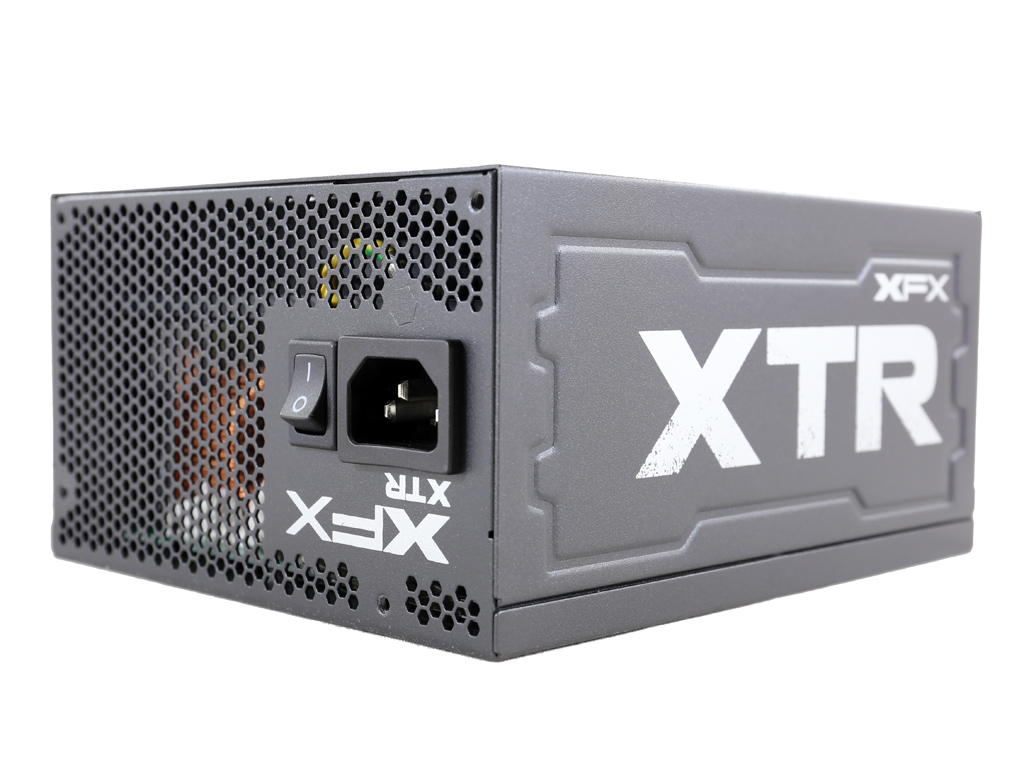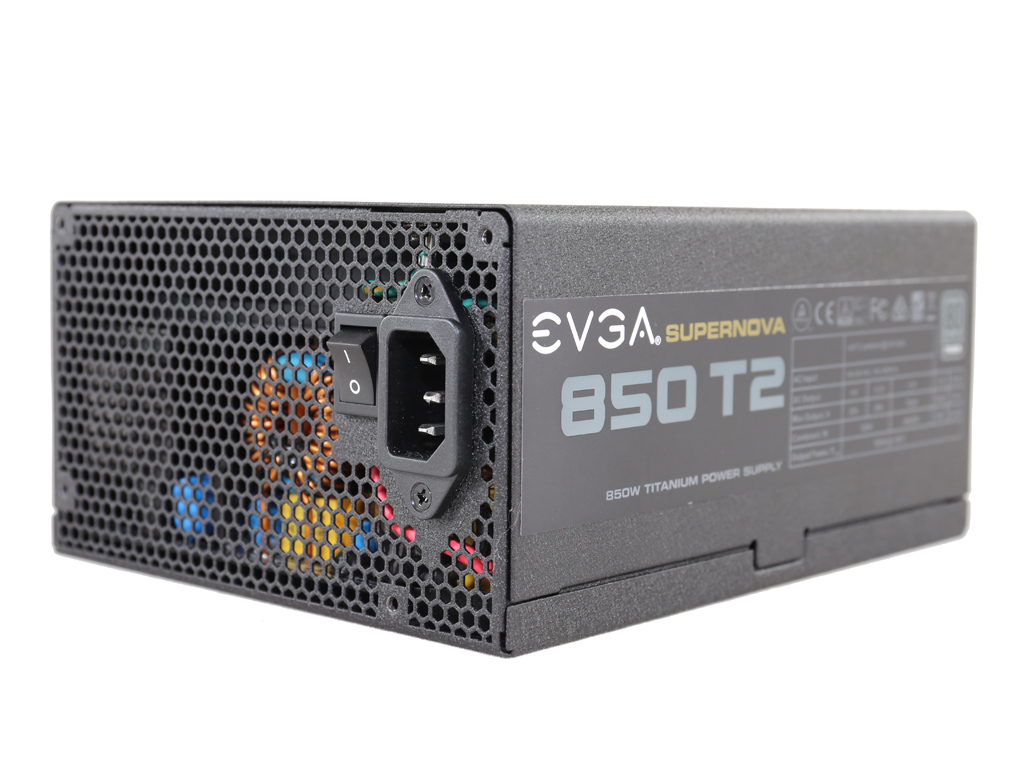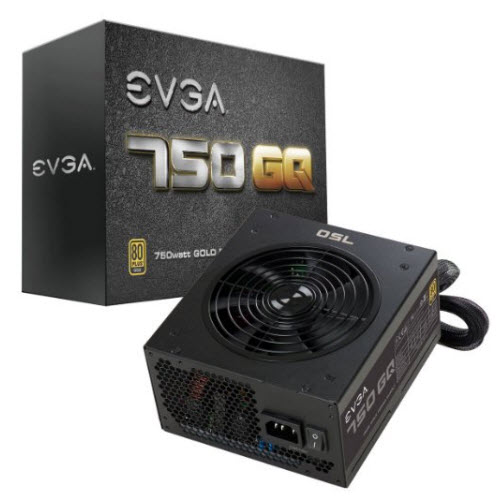XFX XTR Series 850W PSU Review
XFX cooperates closely with Seasonic for its PSU products. That's a major advantage, since Seasonic is a top OEM. The XTR line is XFX's second-best, after the XTS family, and today's review focuses on the 850W model.
Why you can trust Tom's Hardware
Load Regulation, Hold-Up Time And Inrush Current
To learn more about our PSU tests and methodology, please check out How We Test Power Supply Units.
Primary Rails And 5VSB Load Regulation
Load Regulation testing is detailed here.
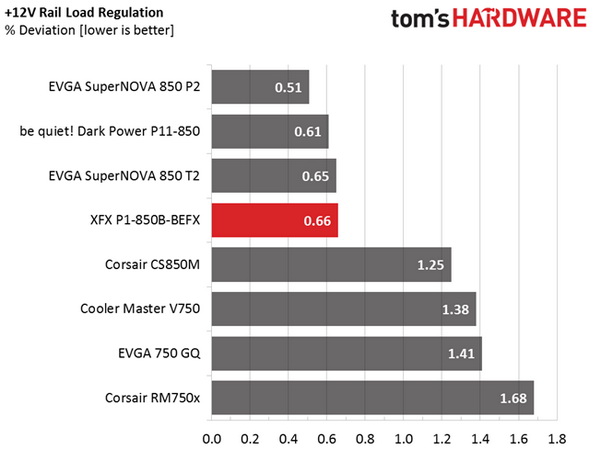
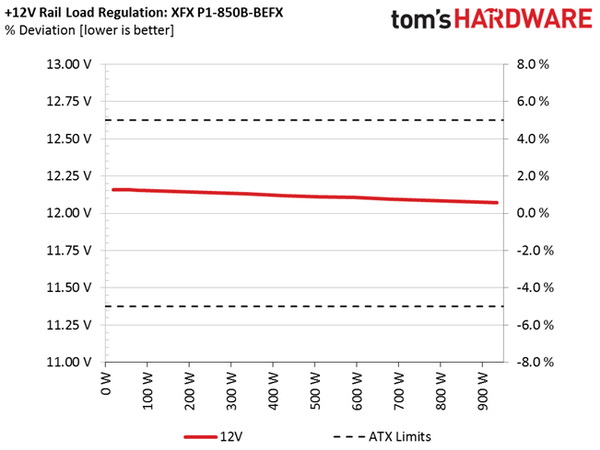
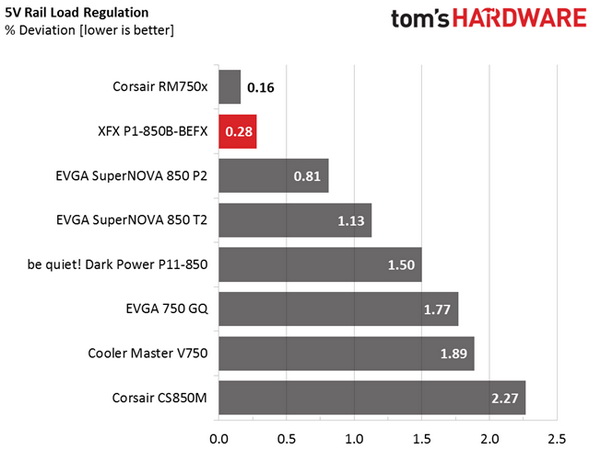
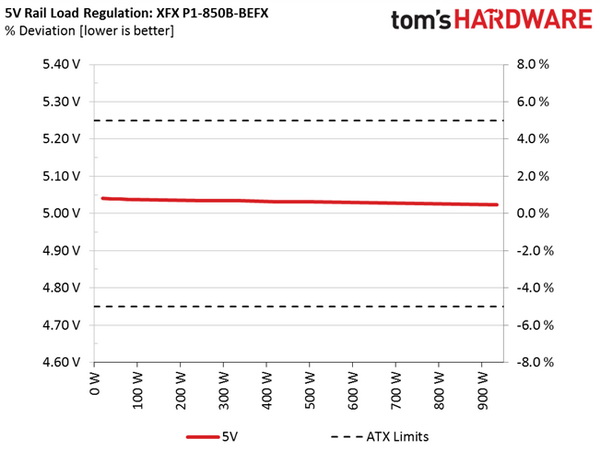
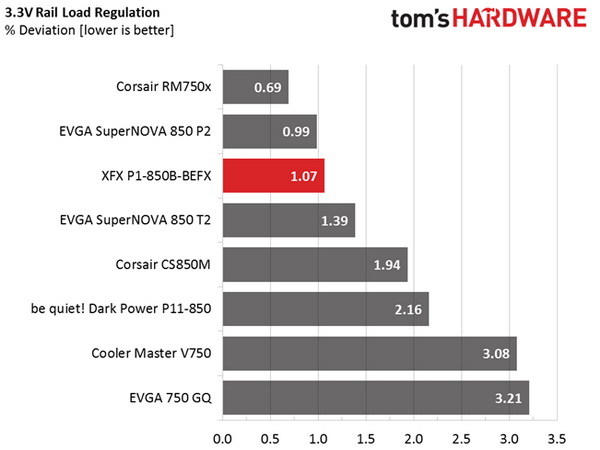
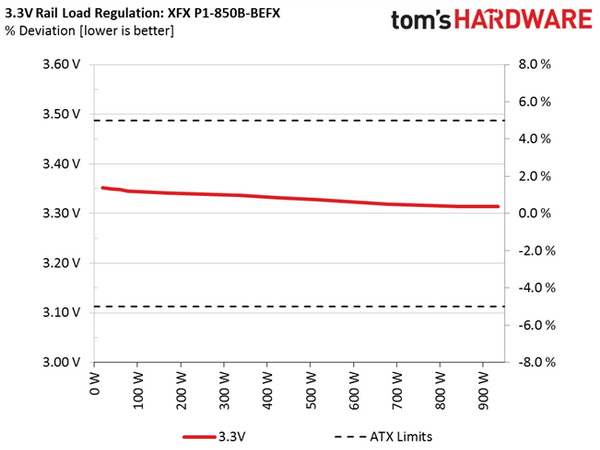
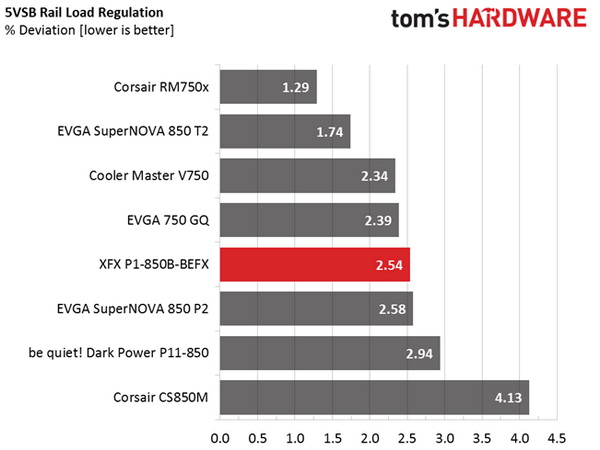
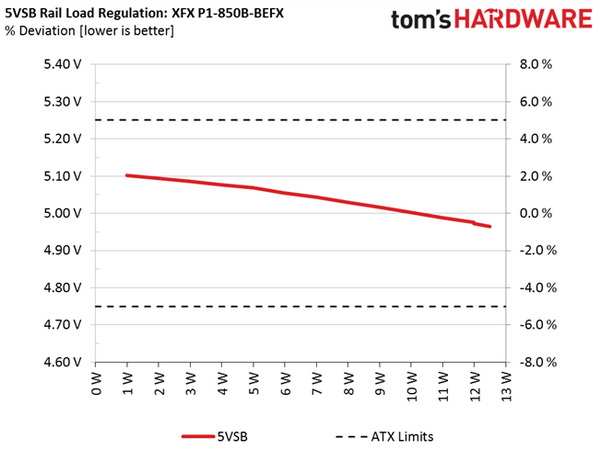
Hold-Up Time
Our hold-up time tests are described in detail here.
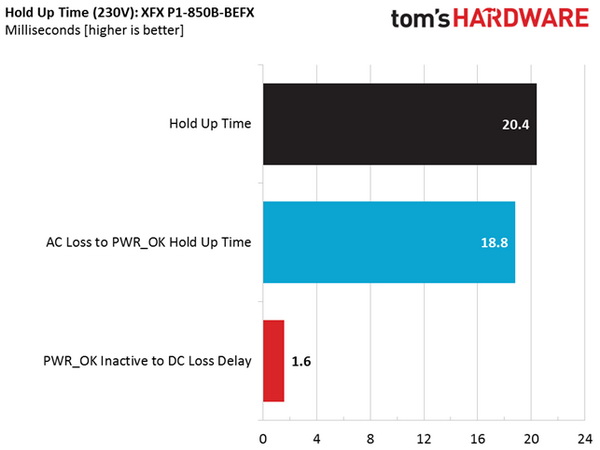
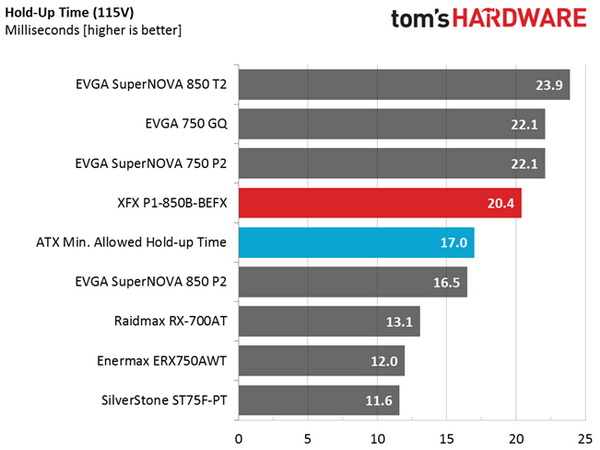
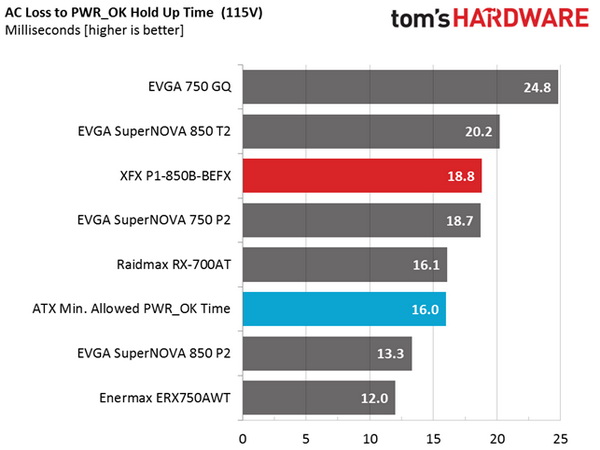
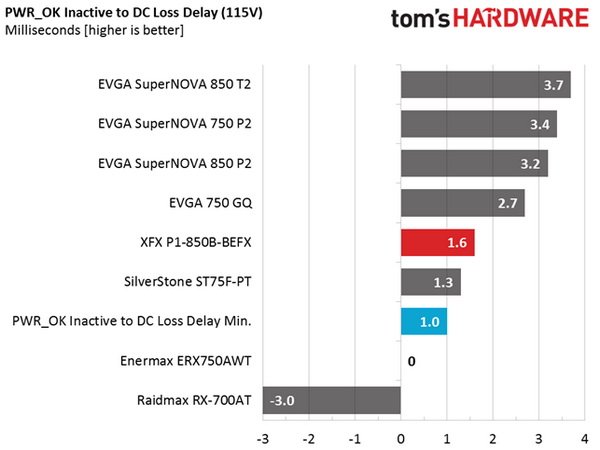
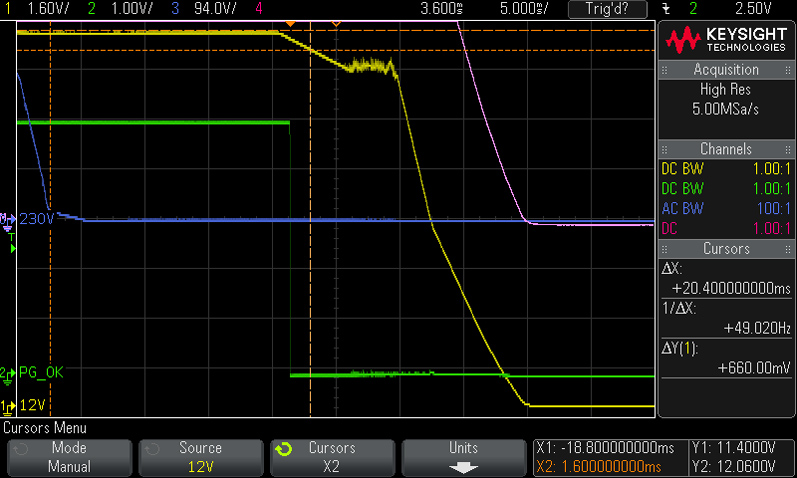
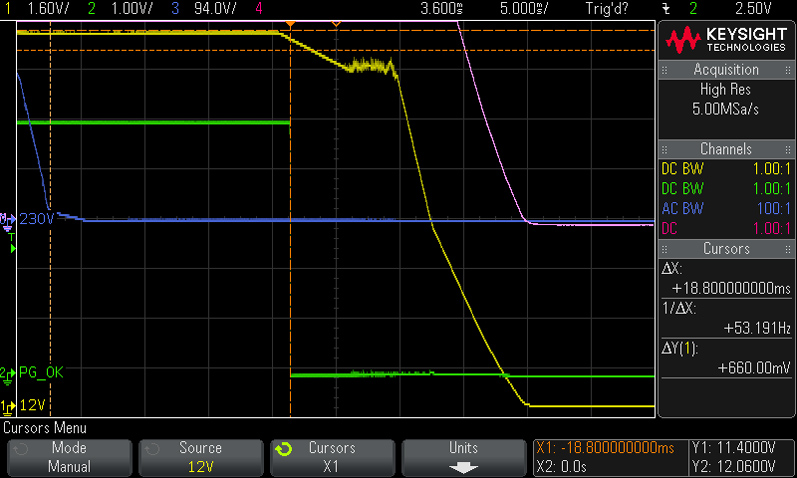
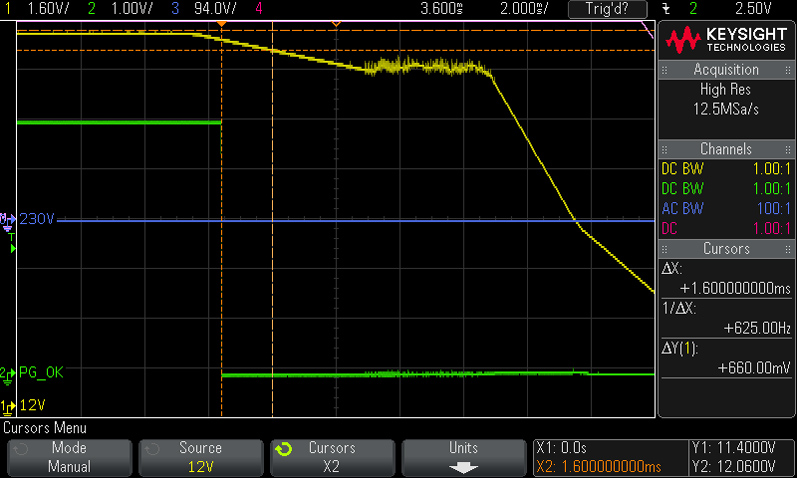
Measured hold-up time easily exceeds 17ms, and the power-good signal is also higher than 16ms. Moreover, that signal drops before the rails go out of spec.
Inrush Current
For details on our inrush current testing, please click here.
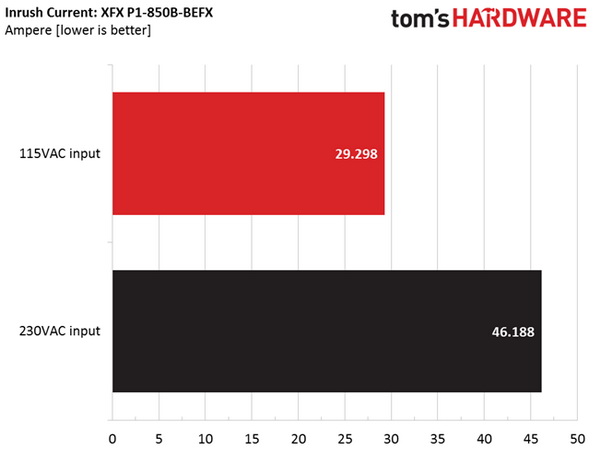
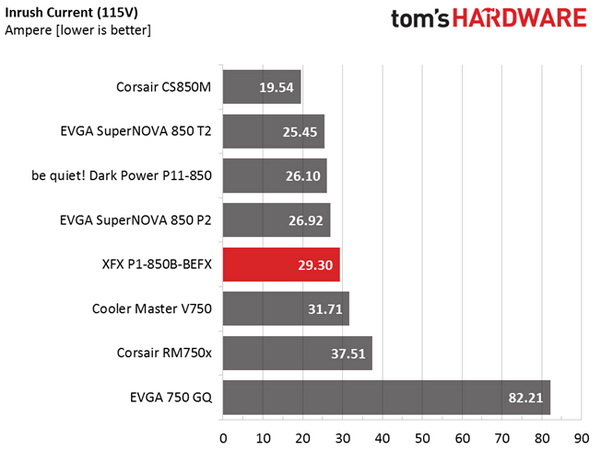
The inrush current is at normal levels with both voltage inputs.
Load Regulation And Efficiency Measurements
The first set of tests reveals the stability of the voltage rails and the PSU's efficiency. The applied load equals (approximately) 10 to 110 percent of the maximum load the supply can handle, in increments of 10 percentage points.
Get Tom's Hardware's best news and in-depth reviews, straight to your inbox.
We conducted two additional tests. During the first, we stressed the two minor rails (5V and 3.3V) with a high load, while the load at +12V was only 0.10A. This test reveals whether a PSU is Haswell-ready or not. In the second test, we determined the maximum load the +12V rail could handle with minimal load on the minor rails.
| Test # | 12V | 5V | 3.3V | 5VSB | DC/AC Watts | Efficiency | Fan Speed RPM | Fan Noise dB(A) | Temps In/Out | PF/AC Volts |
|---|---|---|---|---|---|---|---|---|---|---|
| 1 | 5.199A | 1.983A | 1.970A | 0.979A | 84.75 | 86.50% | 805 | 32.5 | 38.23 °C | 0.969 |
| 12.153V | 5.038V | 3.345V | 5.096V | 97.98 | 41.63 °C | 115.1V | ||||
| 2 | 11.429A | 2.968A | 2.960A | 1.176A | 169.62 | 90.03% | 805 | 32.5 | 38.85 °C | 0.992 |
| 12.145V | 5.036V | 3.341V | 5.086V | 188.40 | 42.53 °C | 115.1V | ||||
| 3 | 18.021A | 3.476A | 3.471A | 1.374A | 254.78 | 90.97% | 1070 | 35.8 | 39.52 °C | 0.980 |
| 12.137V | 5.034V | 3.339V | 5.074V | 280.08 | 43.51 °C | 115.1V | ||||
| 4 | 24.612A | 3.972A | 3.953A | 1.575A | 339.68 | 91.00% | 1475 | 47.7 | 41.15 °C | 0.982 |
| 12.129V | 5.034V | 3.336V | 5.065V | 373.26 | 45.64 °C | 115.1V | ||||
| 5 | 30.864A | 4.968A | 4.950A | 1.781A | 424.56 | 90.65% | 1915 | 51.1 | 41.81 °C | 0.986 |
| 12.120V | 5.031V | 3.332V | 5.054V | 468.33 | 47.13 °C | 115.1V | ||||
| 6 | 37.131A | 5.962A | 5.947A | 1.980A | 509.50 | 90.12% | 2140 | 52.1 | 42.95 °C | 0.988 |
| 12.112V | 5.031V | 3.328V | 5.042V | 565.38 | 48.50 °C | 115.1V | ||||
| 7 | 43.402A | 6.959A | 6.948A | 2.184A | 594.45 | 89.35% | 2205 | 52.8 | 44.28 °C | 0.990 |
| 12.105V | 5.029V | 3.323V | 5.029V | 665.34 | 50.77 °C | 115.1V | ||||
| 8 | 49.694A | 7.953A | 7.952A | 2.390A | 679.42 | 88.63% | 2205 | 52.8 | 45.34 °C | 0.991 |
| 12.095V | 5.028V | 3.319V | 5.018V | 766.55 | 52.38 °C | 115.1V | ||||
| 9 | 56.411A | 8.460A | 8.471A | 2.393A | 764.38 | 87.94% | 2205 | 52.8 | 46.33 °C | 0.991 |
| 12.086V | 5.026V | 3.316V | 5.010V | 869.19 | 54.83 °C | 115.1V | ||||
| 10 | 62.875A | 8.958A | 8.960A | 3.005A | 849.17 | 87.15% | 2205 | 52.8 | 47.18 °C | 0.992 |
| 12.079V | 5.025V | 3.314V | 4.990V | 974.42 | 56.36 °C | 115.1V | ||||
| 11 | 69.963A | 8.958A | 8.962A | 3.006A | 934.14 | 86.22% | 2205 | 52.8 | 48.93 °C | 0.992 |
| 12.070V | 5.024V | 3.314V | 4.984V | 1083.50 | 60.38 °C | 115.1V | ||||
| CL1 | 0.100A | 15.016A | 15.005A | 0.004A | 126.40 | 81.58% | 2205 | 52.8 | 46.36 °C | 0.987 |
| 12.170V | 5.033V | 3.305V | 5.100V | 154.95 | 52.80 °C | 115.1V | ||||
| CL2 | 70.807A | 1.002A | 1.003A | 1.002A | 867.52 | 87.57% | 2205 | 52.8 | 48.03 °C | 0.992 |
| 12.062V | 5.028V | 3.343V | 5.046V | 990.70 | 57.99 °C | 115.1V |
Load regulation is pretty tight on all rails (the 5V rail registers the smallest deviation). This Seasonic platform delivers good voltage stability, among others.
The XTR 850W achieves 90% efficiency with 20% load, while the 80 PLUS Gold certification asks for 87%. The 50% load test is a clear pass also, and under full load the PSU achieves 0.15% more efficiency than required. This unit's KM3S platform easily meets the Gold standard's requirements, even under stressful conditions. Moreover, the PSU can deliver its full load (and even more) at high ambient temperatures.
Of course, the cooling fan spins fast once the thermal load increases significantly, making a ton of noise. The fan profile gets aggressive once the ambient exceeds 40 °C, even under typical loads. If you need a silent PSU and you plan to push it hard, then you should look elsewhere.
Current page: Load Regulation, Hold-Up Time And Inrush Current
Prev Page A Look Inside And Component Analysis Next Page Efficiency, Temperature And Noise
Aris Mpitziopoulos is a contributing editor at Tom's Hardware, covering PSUs.
-
turkey3_scratch How come on the ripple page the 5VSB rail always stays under 15mv (except CL1) but on the crossloads page the 5VSB ripple graph is completely blue, hence greater than 30mv the entire time? Also, you have two "and"s in a row on Page 5. Anyway, what I love about Seasonic is they don't fall short in any category. This PSU excels everywhere, I guess except fan noise, of course.Reply -
turkey3_scratch Reply18155380 said:Nice. Any chance you might have a look at the budget XT's?
^^ Yes please review one of these. Though he only reviews units that the companies actually send to him, so it could be they don't want the XT units to get reviewed, so it'd probably have to be bought retail. -
apazeus I've had the 550w version since around October. At one point it was powering an FX-8350 and a 290X with no hiccups. (Nowadays it's paired with a 6600K and a GTX 1080, uses was less juice.) Nice PSUs.Reply -
Aris_Mp I cannot explain why ripple at 5VSB during the Crossload tests is higher than the high-temperature tests. This is strange indeed.Reply
As for the XTs I will try to find one. -
gofasterstripes Lol XTR and XT - Someone call Shimano and tell them their electric groupset is looking a big fat!Reply -
Shankovich Excellent review. Could you guys possibly redo the Corsair HX 750i and up with the new review parameters? Really interested to see how it is in more detail now.Reply -
damric "All XFX PSUs are made by Seasonic"Reply
Not quite. These are built by Hydance.
http://www.orionpsudb.com/news/the-mystery-of-xfx-budget-xt-line-solved-oem-and-platform-discovered -
Aris_Mp When I state that a unit is made by Seasonic (or any other OEM) it doesn't necessary mean that it is made in its own factories. It is a common practice OEMs to outsource their products to other factories if they cannot meet demand (or in case they want a more affordable production line). However still the original design and the specs are set by the original designer.Reply
Many other models of various OEMs are also made in other factories but there is no safe way to know it without having info from the OEM itself.
Finally, this specific article states about the XFX XT units: "If the available information is correct, XFX XT is designed by Seasonic, but the manufacturing is outsourced to Shenzhen Rui Sheng Yuan just like the Hydance. "
As you can see there is an "if" at the beginning of the sentence. In any case, Seasonic is also behind the XT line. Given that this is an XTR review though, I thought it would be better to spare all above and just state that all XFX PSUs are made by Seasonic and not dive into such detail mentioning the outsourcing of XT line, for which there is no solid information.
Given the opportunity I would like to mention the great work that Orion does and also thank him for the tip about the KM3S platform of the XTR-850 unit. I will try to find some details about the actual differences between the KM3 and KM3S platforms. -
Math Geek i got REAL happy for second there thinking this was one of the budget XTFR units. been waiting for someone, anyone out there to review one so we can see how it performs. they are priced awesome and if they perform even average, they will be worth the low cost for mainstream pc'sReply
either way, nice review :) always solid work
